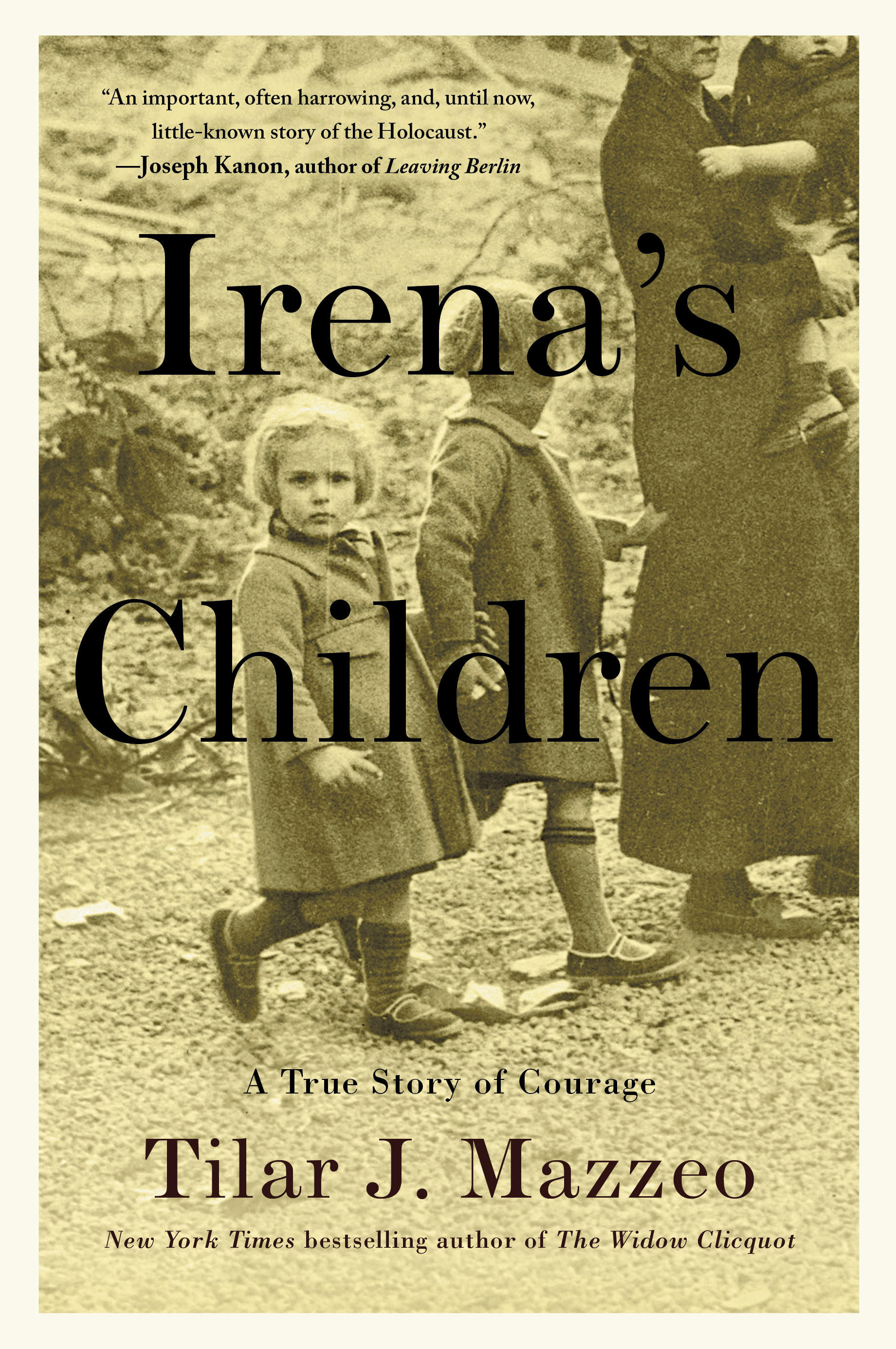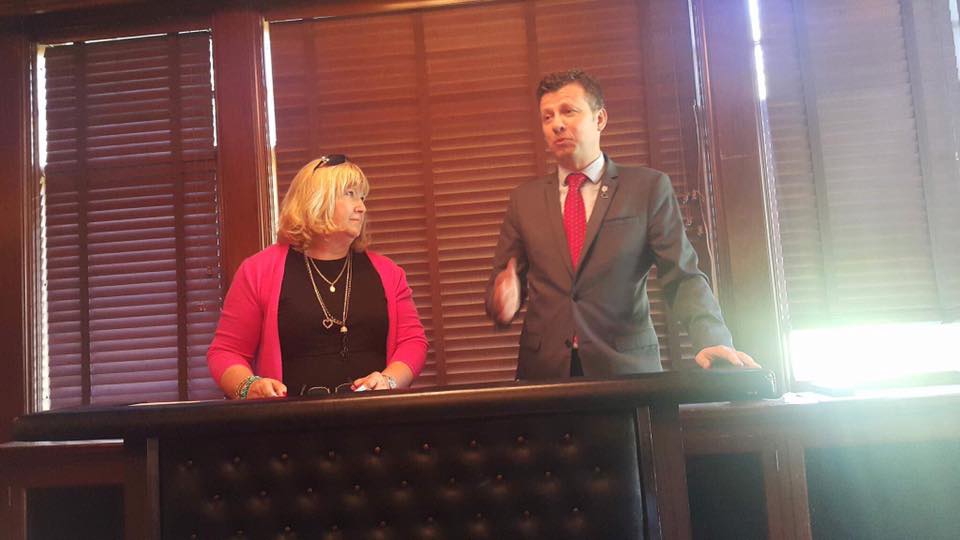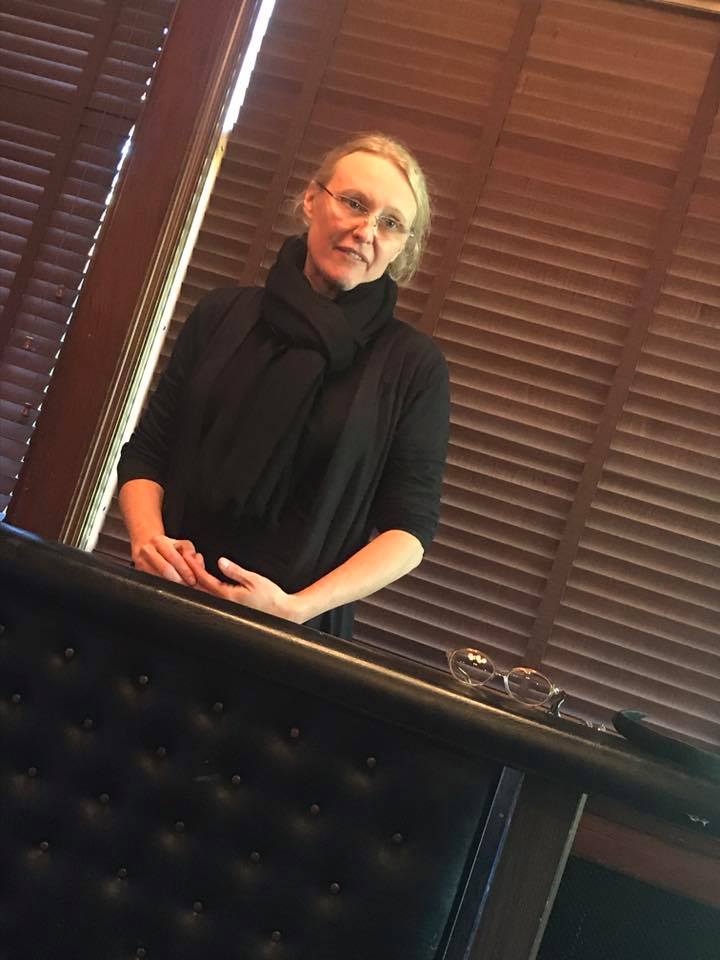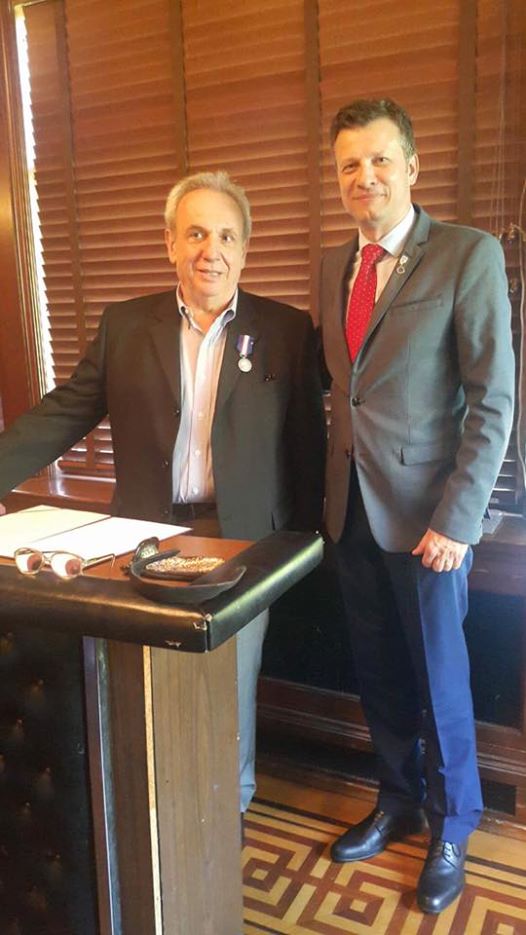
On Friday, May 11, 2018 the Janusz Korczak Association of Canada hosted a ceremony to commemorate Irena Sendler, the rescuer of Jewish Children during the Holocaust. Minister Marek Michalak, the Polish Ombudsman for Children, Consul Marcin Trzciński of the Republic of Poland, and Batia Gilad, the Chairperson of the International Korczak Association were the distinguished guests at the ceremony. It was at the request of Minister Michalak, that the Polish Parliament announced the year 2018 to be dedicated to the memory of Irena Sendler.
The afternoon started with the welcoming remarks by Consul Trzcinski and Jerry Nussbaum, followed by evocative and powerful presentations by Lillian Boraks-Nemetz, a board member of the Association, Minister Michalak and Batia Gilad. Participants at the event had the opportunity to admire Irena Sendler’s souvenirs brought from Poland by the Ombudsman: a pair of glasses, a headband, a watch and Irena’s wedding ring and view an exhibition honouring the life of Irena Sendler, created by the Ombudsman’s office.
Tilar Mazzeo, the author of Irena Sendler’s biography, Irena’s Children, was a keynote speaker and treated the audience to a very moving and inspiring talk about Irena Sendler and other heroes who risked their lives to help children at the Warsaw Ghetto. Tilar Mazzeo is the recipient of the 2018 Jewish Book Festival prize for her biography of Irena Sendler.
The Children’s Rights Ombudsman honoured Jerry Nussbaum, the President of the Janusz Korczak Association of Canada with the INFANTIS DIGNITATIS DEFENSORI medal.
Video recording of the ceremony can be viewed here.
The presentation of Marek Michalak, translated by Janina Furmanik
The memory of Irene Sendler, Irena Sendlerowa in Polish, must be kept in our hearts. Her ideas and messages ought to be constantly scrutinized in order for us to endorse acts of aid and support to the most vulnerable, which she herself had performed at every stage of her life. Irena Sendler rescued Jewish children from the Warsaw ghetto. She organized transfers of the Jewish children from the Warsaw ghetto to various safe houses in the city and its outskirts through an organized and coordinated work of other people to whom the fate of the youngest was not indifferent. But she also did it all by herself. It is of note that these acts had been performed at the risk of torture, imprisonment and ultimate death every day at any time. The collateral damage were also families of those involved in the rescue operations. Today, we recognize that Irena Sendler rescued in person, or has helped to save more than 2,500 Jewish children.
It is a big deal, considering that not only did she rescue so many children, which deserves the highest recognition and undying respect, but she had also maintained lists of each and every child’s first and last names, their personal data and identity to enable her to return them to their parents or relatives after the war. Just like Dr. Janusz Korczak she had saved childhood and humanity: “With all of my most dramatic experiences of war, such as sighting torture in the Pawiak prison, the Gestapo on Shucha Avenue, watching young people slowly dying in a hospital during the Warsaw uprising, where I was a nurse, nothing compared to the emotional significance of Dr. Korczak and his children quietly walking towards the gas chambers to meet with their death... “.
Irena Sendler was truthful, modest and courageous beyond belief given the circumstances and yet she once said: “I regret only one thing – I could have done more. This feeling of regret will haunt me until death. ”
The world first heard about Irena Sendler(owa) from American students. Also Polish children, represented by a 15-year-old Szymon Plociennik from Zielona Gora, expressed their “thank yous” to her. He was the one who in 2006 decided to reward the then 95-year-old Irene Sendlerową. In the application addressed to the international chapter of the Order of Smile he wrote: “(…) In my mind, Irena Sendler without a doubt deserves the Order of the Smile, because she was helping children and doing good unconditionally, while putting her own life at risk and not for show. If only every one of us had the will to sacrifice their lives to save and rescue the innocent, weak, and complete strangers, the world would be a different and better place, devoid of suffering, conflicts and wars. Such unconditional dedication should be praised and rewarded… “[1] Szymon’s request has been met, and Irena Sendler became the 850th Knight of the Order of the Smile, which she subsequently received during a ceremony on 11 April 2007 in Warsaw. Irena Sendler was genuinely touched by both, the award of the Order of the Smile on behalf of children and the letter of commendation from the Pope John Paul II. She considered them as the best thing that ever happened in her life.
We reminisce the children’s acts like these in the year dedicated to the courageous heart of Irena Sendler, simultaneously celebrating the establishment of the Order of the Smile and its 50th anniversary.
She had a soft spot in her heart for children and young people. She would say to them: “You are the future of the world! Do something to make it better. Without wars, the death of the innocent. Promote the good will. Be sensitive to the fate of the most vulnerable and weaker than yourselves. “, as if doubtful that adults could handle it. She also questioned “(…) whether all the nations and individual people in the world have learned their lesson from their horrific experiences and made an effort to make our world better”. She added: “Nothing of the sort appears to have occurred. On the contrary, the world is still in the heat of the tribal wars, racial and national conflicts.”
Irena Sendler was honorable, true in her faith in humanity, and compassionate about the welfare of another human being which was transparent in her pleas and presentations. This was all evidenced by her actions, actual deeds of decency, and heroic accomplishments during the hardest times of all. Yet, many a time, she would repeatedly say: “Don’t make me any heroine. I only did what everyone should have done.” When in reply to these words I asked if everyone had done that, she just looked down lowering her eyes and blushed.
She was modest. Quiet, very smart and cognizant of the current social situation to the last of her days. Her assessments and evaluations were stern. She would ask: “What was the world’s reaction? All those superpowers? The world was silent! And the silence sometimes indicates permission or acquiescence to what is going on”.
This assessment relates significantly to our contemporary times with people still waging wars while innocent children get killed. When we shut our hearts to children and do nothing to alleviate their suffering, or when we close our borders and instead let them suffer and die.
Politicians repeatedly say that help is needed right where the wars break out and where children become victims of bombings. Yet, the doors to our homes remain closed and the rescue operations for individual victims or their masses are not being executed which would serve as a form of preservation of childhood and humanity.
Irena Sendler’s philosophy was to “lend a hand to anyone who is drowning”. I deliberately picked those words of hers given that they fit so well this day and age.
As a person, she was both great and unique, modest and down-to-earth. She constantly attempted to advocate and actively encourage her ideas, saying: “For as long as I live, and until my last breath, I shall lecture people that the most important virtue in life and in this world is benevolence and decency.” I should also mention that Irena Sendler had in mind common good, good health and decent life for both children and mankind in general. She devoted her entire life to this cause but now even though she is gone her voice is as strong and powerful as ever.
Hon. Marek Michalak
The Ombudsman On The Rights Of The Child, Chancellor Of The Order Of Smile International Chapter
The Presentation by Lillian Boraks-Nemetz
A Reflection on Dr. Janusz Korczak and Irena Sendler – Defenders of Children
by Lillian Boraks-Nemetz
Honored Guests, Ladies and Gentlemen,
On behalf of the Janusz Korczak association of Canada what an honor it is to celebrate a day dedicated to Mrs. Irena Sendler.
A courageous Polish woman who saved many Jewish children from the Warsaw Ghetto
At the peril of losing her own life. This is indeed the most profound meaning of sacrifice.
No one ever understood what made some people sacrifice their lives to save Jews during the war. Some observers would pretend not to see what was happening and keep silent,do nothing. Others would perhaps help the persecuted Jews for money. Others still would inform if they knew of a Jew in hiding.
But then there were those with pure hearts who felt that it was their God given duty to help the poor Jewish children and help save them from impending death. Such people were Irena Sendler and Janusz Korczak. Who sacrificed their lives for Jewish children
I was a child during the war and I survived.
I survived while 1,5 million children like me were murdered.
I survived sometimes by sheer luck,
Other times by the kindness of Polish strangers
Who would try to look the other way if they knew that I was Jewish.
I also survived thanks to my father who made arrangements to get our family out of the ghetto.
We have with us today ………an author who wrote a book on Irena Sendler and who will talk to us about this great lady.
But before for the next few minutes I would like to mention another human being who also dedicated his life to children.
Dr. Janusz Korczak. This man wore many hats indeed but above all he exhibited qualities that show what true human values are needed in the world to make it a better place for all-particularly young people.
He is known to have said. “You cannot even understand a child,” he wrote, “Until you achieve self-knowledge: you yourself are a child whom you must learn to know, rear. And above all enlighten.”
My fascination with this man began on a dreary day in the Ghetto in what was literally a prison for Warsaw Jews and where Dr. Korczak faught to keep safe his 200 orphans.
The streets of the Ghetto place reeked of typhus ridden bodies of children who had lost their parents due to deportations, disease and starvation. People’s faces everywhere looked haunted by fear and deprivation.
During deportations various parts of the ghetto were raided then closed off and the people deported to the camps. This was the process of elimination and annihilation.
When our building was raided we were ordered out of our home and into the street to join a long line of jewish people. We started walking in this line that was heading for Umschlagplatz. A depot where Jews were gathered and packed into cattle cars headed for Treblinka death camp.Many didn’t realize that this was to be their destination and the destination of the Ghetto orphans..
Here we are in line my mother holding my little sister and me clutching her arm begging her not to leave me, AS luck would have it there was sudden chaos and shooting in the lineup and from the back someone’s’ arms swept us into an open gate of a building while the line to that Umschlagplatz went without us . It was my father who saved us that time . We were lucky.
Not so DR. Korczak and his children who were destined to walk along the same route.
In his last entry in the ghetto Diary on August 4th 1942 Korczak writes:
I am watering flowers. My bald head in the window. What a splendid target. He has a rifle. Why is he standing and looking on so calmly?
The next day on August 5th 1942, they came for the children of the orphanage.
Janusz Korczak was offered a reprieve as he had many friends among the Poles. He was told that he didn’t have to go but Korczak refused, saying,” I hate desertion, and besides my children need me.
Father told me that Janusz Korczak was a hero. He often spoke of that day and how Korczak’s 200 orphans were ordered out of the building and made to march through the Warsaw Ghetto with Korczak at the helm holding a small child in his arms and one little one by the hand. They were carrying the green banner of King Mathew, the character in his popular book for children about a child King who fought for children’s rights with the elders.
In this sad procession behind Korczak followed the other children and the orphanage assistants. They marched through the Warsaw Ghetto straight to the Umschlagplatz, where they were packed into cattle cars heading for Treblinka death camp, and where it is said they all perished, probably by gas.
No survivor who was there at that time can forget the long procession. Many wrote about it.
Mrs Irena Sendler , a Polish woman with a huge heart, herself a rescuer of children was there and wrote the following; and I quote:
“When that day in August of 1942, I saw that tragic parade in the street, those innocent children walking obediently in the procession of death and listening to the doctor’s optimistic words, I do not know why for me and for all the other eye witnesses our heart did not break.”
And so the Korczak legend carries on to this day and never has it been more relevant than these times when wars that are sweeping our world cause harm to so many children. It was the children, Korczak wrote, who always had to carry the burden of history’s atrocities.
It is our hope that the flame lit by this great man will burn forever in the hearts of all those who love children.
Thank you.

Minister Michalak and Janina Furmanik

Tilar Mazzeo

Jerry Nussbaum (left) and Marek Michalak